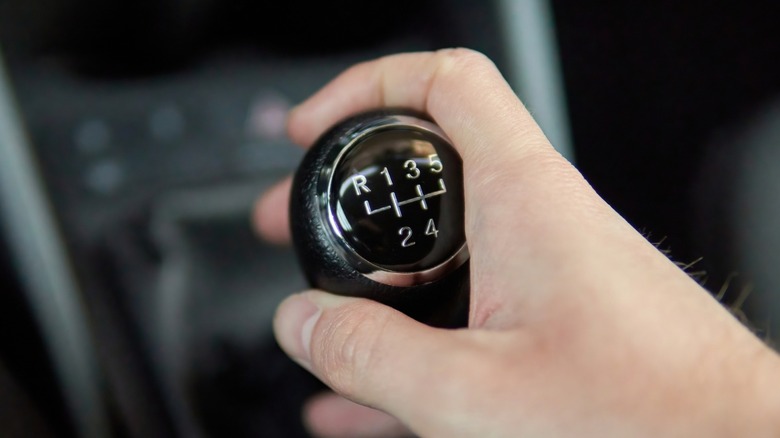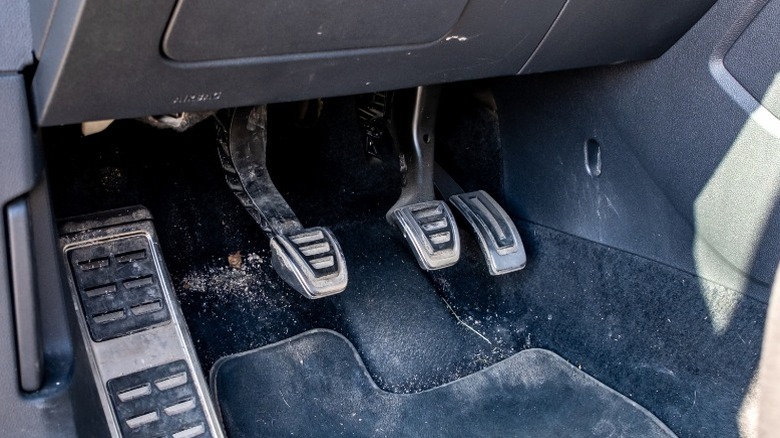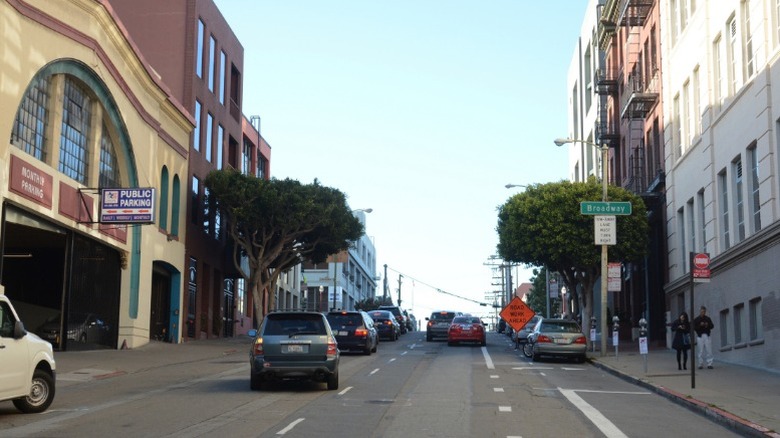The Biggest Cons To Consider Before Buying A Manual Transmission Car
Our cars have advanced a long way in the past decades. Not only are they more efficient and eco friendly, but they're also smarter, thanks to modern technology and safety equipment. However, while most of the changes to cars in the past 50 years have been positive, there are some trends that are unpopular on a large scale. One example is automakers' widespread use of automatic transmissions. These components are remarkable feats of engineering, significantly reducing the amount of work that goes into driving by using a complex set of gears, solenoids, and electronics to allow the vehicle to shift on its own. Automatic gearboxes have been around since the early 1900s and have risen steadily in popularity since the second half of the century. Today, most new cars in the United States come with an automatic transmission, and only a handful of new vehicles are available with a manual gearbox.
However, despite the rise in automatic transmissions, many enthusiasts prefer a manual. Driving with a clutch and manual shifter can be extremely fun, and some gearheads feel that it provides a more intimate and involved experience. Besides manual transmissions being fun to drive, they can also offer a few additional benefits. Cars with manual transmissions often get better gas mileage, as drivers are capable of choosing the optimal gear for their current conditions.
Additionally, manual transmission vehicles are often cheaper to purchase and maintain, thanks to the use of less complex parts. That said, manual transmissions do come with some cons, too. If you're considering buying a car with a manual gearbox, it's important that you understand the drawbacks as well as the pros. Fortunately, that's what we're going to discuss here together. Here are the biggest cons to consider before buying a manual transmission car.
There's a steep learning curve for beginners
Perhaps the biggest con when it comes to manual transmission cars is that learning to drive one can be extremely challenging. This is especially true for those just learning to drive in general (i.e., someone who has never driven any type of vehicle, regardless of transmission type). That's because learning to drive a manual means understanding engine RPMs and developing the muscle memory to shift gears at the proper times. If you can already drive an automatic car, you'll at least understand how to operate the steering wheel and gas and brake pedals, and you should have some basic understanding of how the vehicle shifts as you accelerate and decelerate.
If you jump into trying to learn to drive a manual without any prior driving experience, you may find yourself overwhelmed. Driving a manual involves far more user input than an automatic. You'll have to learn how to shift gears with one hand, while controlling the steering wheel with your other hand. You'll also have to learn how to operate the clutch pedal, while applying the proper pressure to the gas pedal, meaning you must learn how to use both feet in order to operate two pedals at once.
If you fail to accelerate properly while depressing the clutch, you could stall the car, which is not only embarrassing, but it can also be unsafe, depending on where you're driving. It's also important to remember that you can damage the clutch by using it improperly. For example, riding the clutch while driving or applying too much gas while trying to avoid stalling when taking off from a stop can burn up your clutch. That can lead to an ability to drive the vehicle altogether and result in extremely expensive repairs.
Depending on where you live, manual transmissions can be frustrating to drive
The second biggest drawback of manual transmission cars is that they can be frustrating to drive in certain areas. This is most true for places with lots of hills, like San Francisco. Even experienced drivers can struggle to take off from a stop on a steep hill while operating a manual gearbox. The reason why has to do with the way you have to take off from a standstill with this type of transmission. If you apply too little gas while letting off on the clutch too quickly, your vehicle is likely to stall. However, if you ease off on the clutch too slowly without the brake pedal depressed, your car will begin rolling backward. This can result in a highly stressful situation when other drivers are stopped very close behind you, and that stress can cause you to make mistakes, further adding to the anxiety.
Besides hilly areas, many people dislike driving manual transmission cars in heavy traffic. Even without the threat of rolling backward, driving in stop-and-go traffic with a manual gearbox can be tiresome. Because this type of thick traffic may only move a few feet at a time, constantly having to deal with the clutch pedal and shifting into gear every couple of minutes can become tedious.
All that said, many people own manual transmission cars in both hilly areas and cities with lots of dense traffic. There's no reason why you can't learn to drive a manual, even if you live somewhere with these conditions. However, these situations can make learning more challenging, and if you choose to buy a manual transmission car, you should look for a safe, flat, and traffic-free place to practice.


